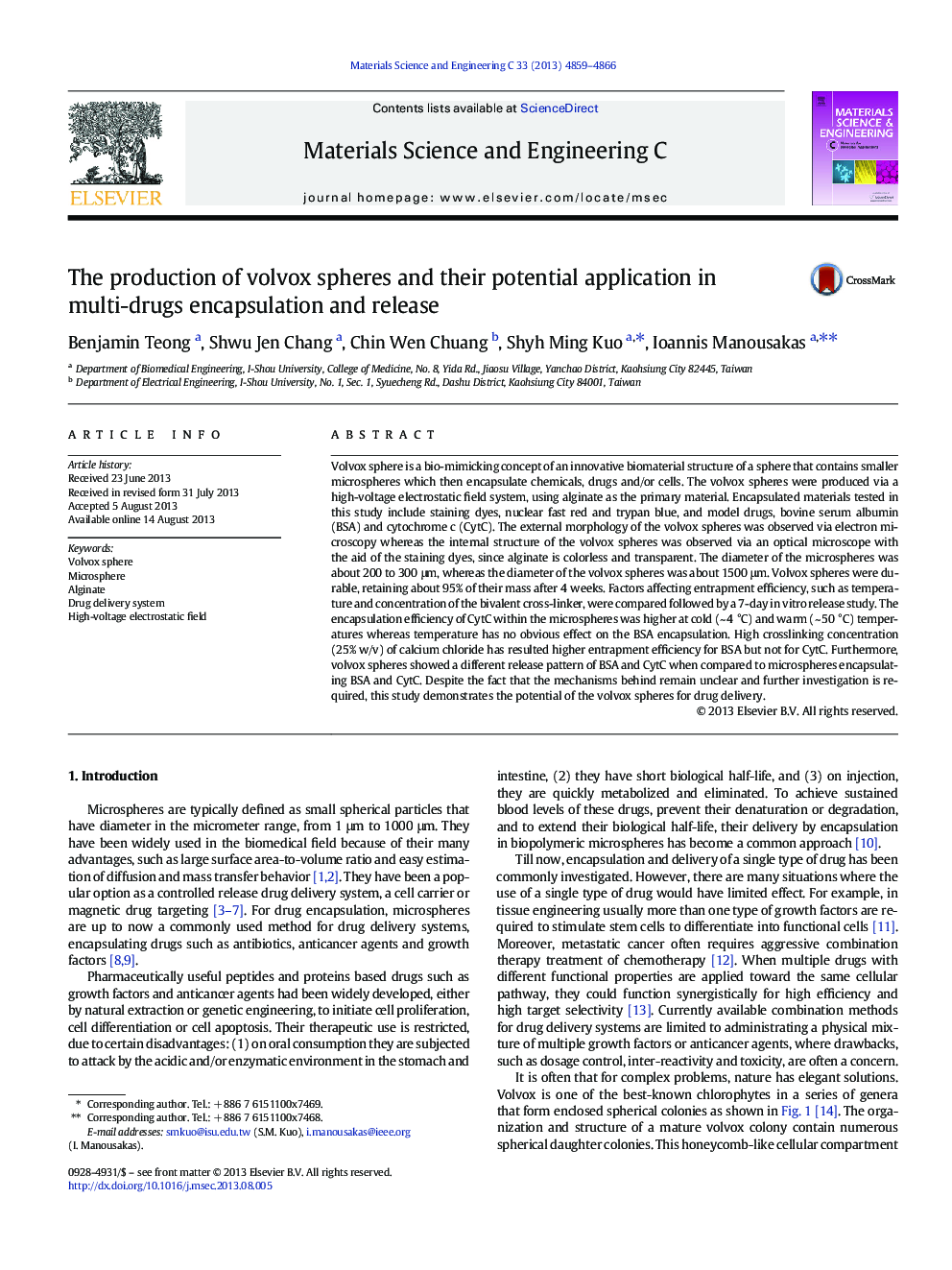| Article ID | Journal | Published Year | Pages | File Type |
|---|---|---|---|---|
| 1429511 | Materials Science and Engineering: C | 2013 | 8 Pages |
•Volvox spheres contain smaller microspheres which can encapsulate drugs and/or cells.•Alginate is the primary material for the inner and outer spheres.•Encapsulation is affected by the crosslinking, temperature and the selection of drugs.•Volvox spheres show different release patterns than simple microspheres.•The proposed drug carrier can achieve slow release of drugs.
Volvox sphere is a bio-mimicking concept of an innovative biomaterial structure of a sphere that contains smaller microspheres which then encapsulate chemicals, drugs and/or cells. The volvox spheres were produced via a high-voltage electrostatic field system, using alginate as the primary material. Encapsulated materials tested in this study include staining dyes, nuclear fast red and trypan blue, and model drugs, bovine serum albumin (BSA) and cytochrome c (CytC). The external morphology of the volvox spheres was observed via electron microscopy whereas the internal structure of the volvox spheres was observed via an optical microscope with the aid of the staining dyes, since alginate is colorless and transparent. The diameter of the microspheres was about 200 to 300 μm, whereas the diameter of the volvox spheres was about 1500 μm. Volvox spheres were durable, retaining about 95% of their mass after 4 weeks. Factors affecting entrapment efficiency, such as temperature and concentration of the bivalent cross-linker, were compared followed by a 7-day in vitro release study. The encapsulation efficiency of CytC within the microspheres was higher at cold (~ 4 °C) and warm (~ 50 °C) temperatures whereas temperature has no obvious effect on the BSA encapsulation. High crosslinking concentration (25% w/v) of calcium chloride has resulted higher entrapment efficiency for BSA but not for CytC. Furthermore, volvox spheres showed a different release pattern of BSA and CytC when compared to microspheres encapsulating BSA and CytC. Despite the fact that the mechanisms behind remain unclear and further investigation is required, this study demonstrates the potential of the volvox spheres for drug delivery.
